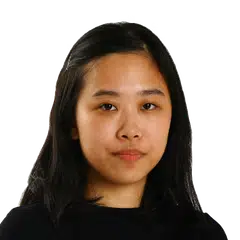New common curriculum and career preparation for University of the Arts students
Sign up now: Get ST's newsletters delivered to your inbox
![CMG20230510-PekYL01白艳琳/安诗一 胡洁梅/University of the Arts Singapore to host inaugural Arts Symposium and launch new logo [The Singapore Airlines Theatre, LASALLE College of the Arts ]
Minister Chan Chun Sing, Minister for Education unveiling the brand new UAS logo at The Singapore airline theatre, lasalle college of the arts on May 10th, 2023.](https://cassette.sphdigital.com.sg/image/straitstimes/51ac3a990582c8480d9e97ff1677666b7c06715d003e4a7ae489891b59c58f77)
Education Minister Chan Chun Sing (fifth from left) unveiling the brand new University of the Arts Singapore logo, on May 10, 2023.
PHOTO: LIANHE ZAOBAO
Follow topic:
SINGAPORE - Students joining the new University of the Arts Singapore (UAS) in 2024
In an interview with The Straits Times, UAS vice-chancellor Kwok Kian Woon said students will also have to take courses as part of a common curriculum that is beyond their main specialisation. These could include topics such as communication, digital literacy and social issues.
UAS – the first in Singapore to focus on the arts – will take in its first cohort of students across undergraduate degrees and Master of Arts programmes in August 2024. It is expecting an intake of more than 700 students.
The university is formed by an alliance between Lasalle College of the Arts and the Nanyang Academy of Fine Arts (Nafa), and will start receiving applications in the third quarter of 2023.
It launched its logo on Wednesday at its inaugural UAS Arts Symposium held at Lasalle, where more than 450 arts educators and partners from government agencies, industry and cultural organisations gathered to discuss arts education.
Education Minister Chan Chun Sing, who attended the event, said: “At a juncture where societies increasingly recognise the value of the arts, and economies are diversifying to increasingly value creative thinking, the establishment of UAS is indeed a worthwhile and important pursuit.”
He added: “With its people, and its location spanning the heart of our civic district across the National Design Centre and Lasalle’s and Nafa’s campuses, UAS is especially well placed to act as a catalyst for an even more vibrant arts and cultural ecosystem.”
Said Mr Chan: “We have seen this with other leading arts institutions worldwide, such as with the Royal College of Art and University of the Arts London.”
UAS must offer new value propositions for the global economy, he said, adding that its graduates must be industry-relevant, while remaining grounded in both core and specialised skillsets. “The future of organisations is increasingly interdisciplinary, with designers, artists and engineers working closely together,” he added.
“Skills traditionally valued in the arts are becoming increasingly sought after in other sectors, such as in the areas of user experience design and creative placemaking. Art forms are also evolving with the rise of technology, including artificial intelligence and the metaverse.”
UAS should also be a “bridging force” in an increasingly fragmented world, and take advantage of Singapore’s unique position at the crossroads between the East and West to build a niche for itself, said Mr Chan, adding that the hope is for it to establish itself as a leading arts education institution regionally and globally.
In his keynote address, Professor Kwok highlighted the value of arts education and challenges in the face of global crises and technological advancement.
These include teaching students how to use new tools without replacing the need to grapple with difficult questions and make judgments.
There is much potential for engagement with partners in the arts and educational precinct within the city, where UAS is located, he said.
The National Library Board’s plans to centralise its arts collection and programming is a golden opportunity for UAS to work closely with it, he added.
“We also find great affinity with the National Gallery of Singapore’s new initiatives in designing and delivering online courses on art, drawing from its South-east Asian collections, networks and expertise.”
In addition, the National Arts Council (NAC) and UAS will be launching the NACUAS Arts Scholarship soon, in time for the first undergraduate intake in 2024.
Prof Kwok told ST that UAS, which will be able to award degrees, will elevate arts training to the status of higher education.
“Apart from strengthening (students’) technical skills, we want to give them wider exposure to social, economic and environmental conditions of the world today.”
An arts education develops a wide range of human senses, along with deep interpretation skills and abilities such as seeing, listening and performing, he said. “In the process of art-making, you make judgments and choices.”
Theatre, for instance, can open up many dimensions of life and a deeper level of reflection for both the practitioner and the audience, he added.
Prof Kwok said UAS is also looking at expanding overseas opportunities for students, through exposure and exchange programmes with universities in higher arts education.
To give them a head start, students will need to take career preparation modules on subjects such as personal branding, and ethics and professionalism.
Students will need to finish one internship which could be in the arts and creative industries or even in non-creative sectors such as banks, where design expertise is increasingly needed.
“Our education mission doesn’t stop when students graduate and enter the job market and get their first job... It’s about developing a vocation as creative individuals over a lifetime where there may be turning points, and sustaining it,” said Prof Kwok.


